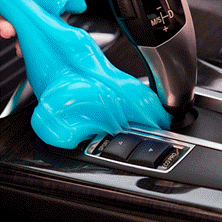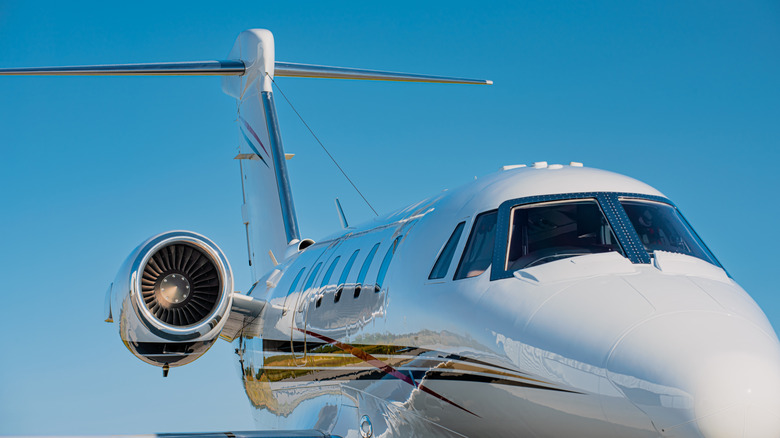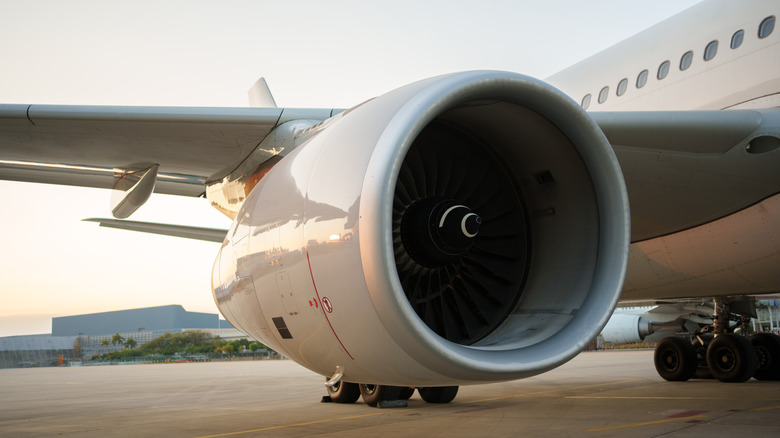staff@slashgear.com (Daniel Trock)
2025-05-22 08:15:00
www.slashgear.com
When you think of a commercial jet taking off, where would it make the most sense to put the jet engines? You might think of something like a rocket ship, and place the engines near the back to generate the greatest amount of forward thrust for the entire vehicle. That makes sense, and in fact, the majority of commercial jets actually did use this framework for a long time. Starting in the 1970s, though, this design was gradually phased out in favor of the under-wing engine mounts we see more commonly today.
Advertisement
The primary reason for this, among others, is a change in the precise type of jet engine that commercial airliners primarily used. Specifically, it was from turbojet to turbofan engines, the latter of which can’t be safely mounted on a plane’s rear. All that said, rear-engine jets haven’t completely disappeared from the runways of the world, they’ve just become the primary territory of privately-owned aircraft. If you haven’t seen a jet with rear-mounted engines in a long time, it might just be because you don’t know anyone who owns a private jet.
It’s not safe to rear-mount large engines on commercial airliners
Prior to the 1970s, the primary form of jet engine was the turbojet engine, which was used by large aircraft as far back as the late 1930s. Commercial aircraft would have several of these engines mounted to their rears, above and behind their wings, to generate the thrust necessary for flight. In the earlier days of commercial air travel, airports didn’t have the same kind of tech and resources we have now like jet bridges from a gate to a plane’s hatch. Passengers would need to enter and disembark the plane via a staircase on the side, necessitating rear-mounted engines to get the plane close enough to the ground.
Advertisement
Starting in the 1970s, though, these turbojet engines gradually started to make way for the more fuel-efficient turbofan engines, which are much larger in size. Turbofan engines are far too large to mount to a plane’s rear without throwing the whole thing off-balance. So, planes were redesigned with stronger, sturdier wings to support the engines’ weight, and the engines were mounted beneath them. This was a good move overall for the airline industry, as rear-mounted turbojet engines were starting to exhibit their own problems: for one thing, due to a plane’s layout, the placement of rear-mounted engines relative to fuel stores increased the likelihood of sudden, explosive failure.
Rear-engines are better for smaller, private jets that make quick departures
While rear-mounted engines are largely a thing of the past for commercial aircraft, that doesn’t mean they’re gone entirely. The only reason you’re not seeing them is because they’re landing on private runways or at smaller airports.
Advertisement
Private, executive jets still make extensive use of the rear-mounted framework for a couple of reasons. First and foremost, there’s the original benefit of easier, ground-based disembarking. If a private jet is landing at an airport without dedicated gates or not landing at the gate, the passengers and crew need to be able to disembark from the staircase. Again, this isn’t safe to do with under-wing engines, whereas rear-mounted engines are far enough away to not endanger anyone.
In addition to that, private jets also tend to be much smaller than commercial jets and therefore don’t need nearly as much power to fly. They don’t need gigantic turbofan engines mounted under heavier, thicker wings to generate more lift and save fuel — they can just stick to rear-mounted engines to get their passengers where they need to go, which gives the additional benefit of lighter, more maneuverable wings. Rear-mounted engines also generate less noise within the cabin, which V.I.P. riders tend to appreciate.
Advertisement

PULIDIKI Car Cleaning Gel Universal Detailing Kit
Make car cleaning effortless with the PULIDIKI Car Cleaning Gel Universal Detailing Kit, a simple yet effective solution for keeping your vehicle spotless. With over 89,741 ratings and an impressive 4.1-star average, it’s no wonder this kit is a highly rated Amazon Best Seller.
Loved by over 40,000 buyers in just the past month, it’s an unbeatable deal for only $6.99. Perfect for cleaning those hard-to-reach areas, this detailing gel is a must-have for car enthusiasts. Order now for just $6.99 at Amazon!
Help Power Techcratic’s Future – Scan To Support
If Techcratic’s content and insights have helped you, consider giving back by supporting the platform with crypto. Every contribution makes a difference, whether it’s for high-quality content, server maintenance, or future updates. Techcratic is constantly evolving, and your support helps drive that progress.
As a solo operator who wears all the hats, creating content, managing the tech, and running the site, your support allows me to stay focused on delivering valuable resources. Your support keeps everything running smoothly and enables me to continue creating the content you love. I’m deeply grateful for your support, it truly means the world to me! Thank you!
|
BITCOIN
bc1qlszw7elx2qahjwvaryh0tkgg8y68enw30gpvge Scan the QR code with your crypto wallet app |
|
DOGECOIN
D64GwvvYQxFXYyan3oQCrmWfidf6T3JpBA Scan the QR code with your crypto wallet app |
|
ETHEREUM
0xe9BC980DF3d985730dA827996B43E4A62CCBAA7a Scan the QR code with your crypto wallet app |
Please read the Privacy and Security Disclaimer on how Techcratic handles your support.
Disclaimer: As an Amazon Associate, Techcratic may earn from qualifying purchases.




























![Legend of Zelda: Ocarina of Time Walkthrough Part 4 [3/3]](https://techcratic.com/wp-content/uploads/2025/08/1755588431_maxresdefault-360x180.jpg)

























































![Strange Town – Spotted in the Sky [Seguin, TX] [Unidentified Flying Object]](https://techcratic.com/wp-content/uploads/2025/08/1755546005_maxresdefault-360x180.jpg)




















